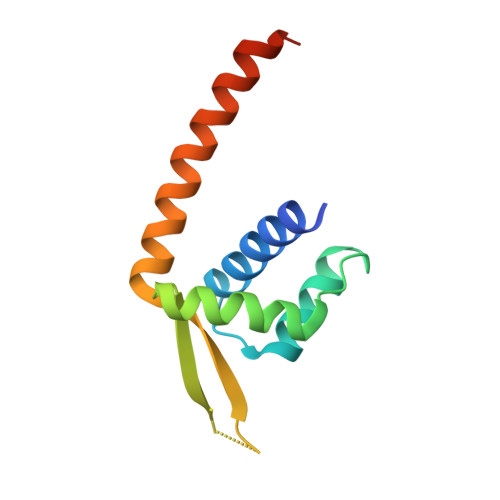Structure of the transcriptional regulator LmrR and its mechanism of multidrug recognition.
Madoori, P.K., Agustiandari, H., Driessen, A.J., Thunnissen, A.M.(2009) EMBO J 28: 156-166
- PubMed: 19096365
- DOI: https://doi.org/10.1038/emboj.2008.263
- Primary Citation of Related Structures:
3F8B, 3F8C, 3F8F - PubMed Abstract:
LmrR is a PadR-related transcriptional repressor that regulates the production of LmrCD, a major multidrug ABC transporter in Lactococcus lactis. Transcriptional regulation is presumed to follow a drug-sensitive induction mechanism involving the direct binding of transporter ligands to LmrR. Here, we present crystal structures of LmrR in an apo state and in two drug-bound states complexed with Hoechst 33342 and daunomycin. LmrR shows a common topology containing a typical beta-winged helix-turn-helix domain with an additional C-terminal helix involved in dimerization. Its dimeric organization is highly unusual with a flat-shaped hydrophobic pore at the dimer centre serving as a multidrug-binding site. The drugs bind in a similar manner with their aromatic rings sandwiched in between the indole groups of two dimer-related tryptophan residues. Multidrug recognition is facilitated by conformational plasticity and the absence of drug-specific hydrogen bonds. Combined analyses using site-directed mutagenesis, fluorescence-based drug binding and protein-DNA gel shift assays reveal an allosteric coupling between the multidrug- and DNA-binding sites of LmrR that most likely has a function in the induction mechanism.
Organizational Affiliation:
Department of Biophysical Chemistry, Groningen Biomolecular Sciences and Biotechnology Institute, University of Groningen, Groningen, The Netherlands.














